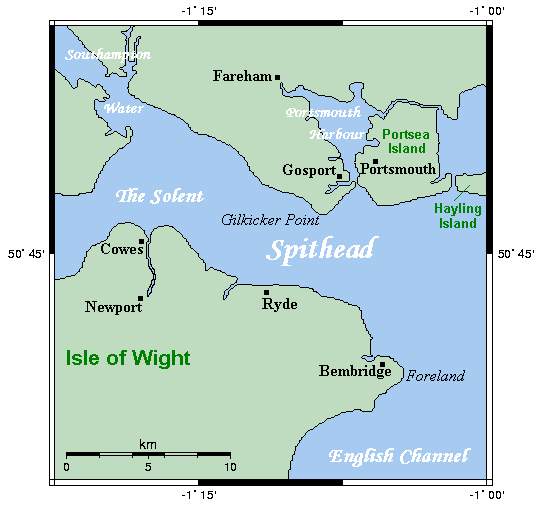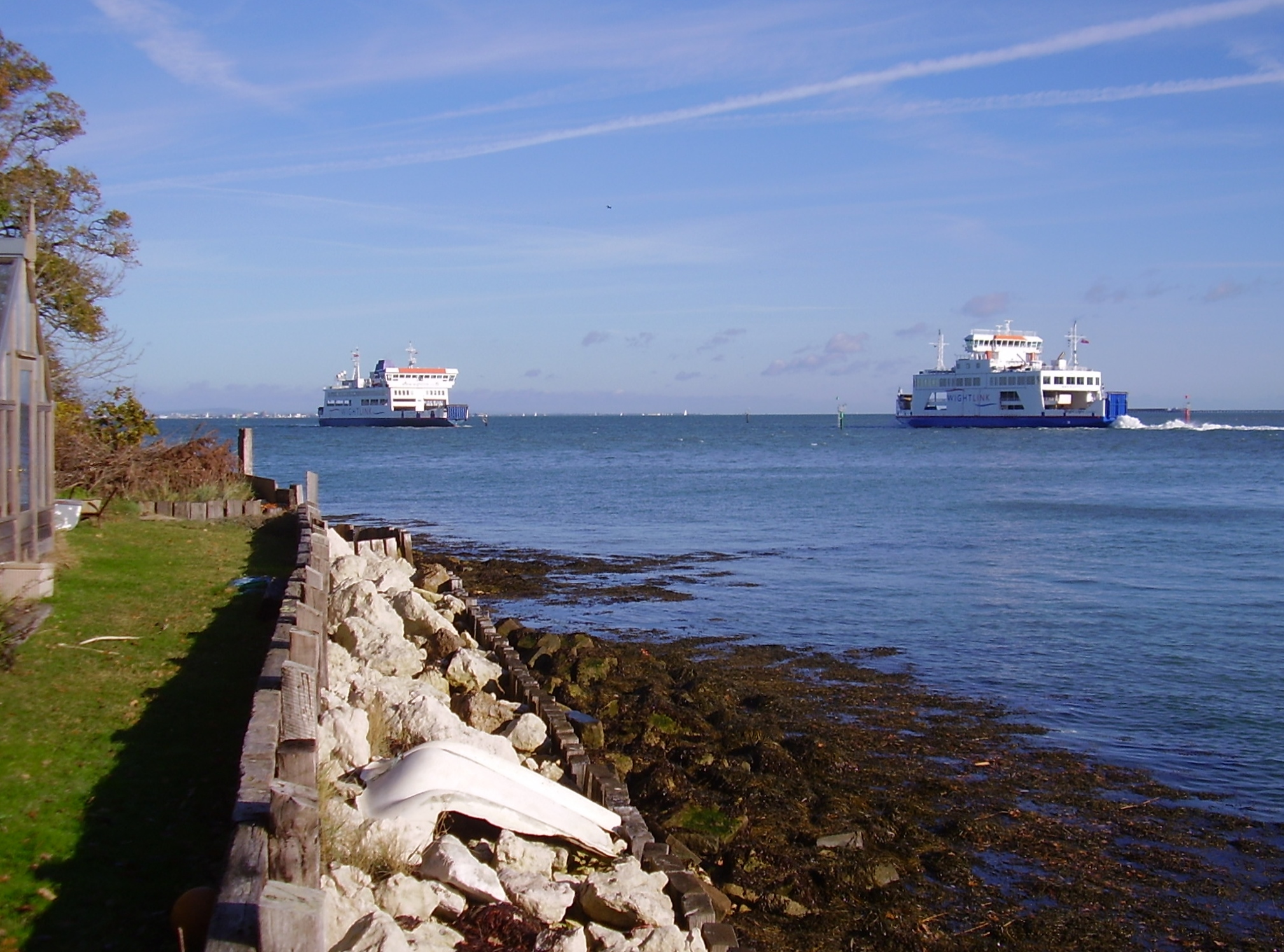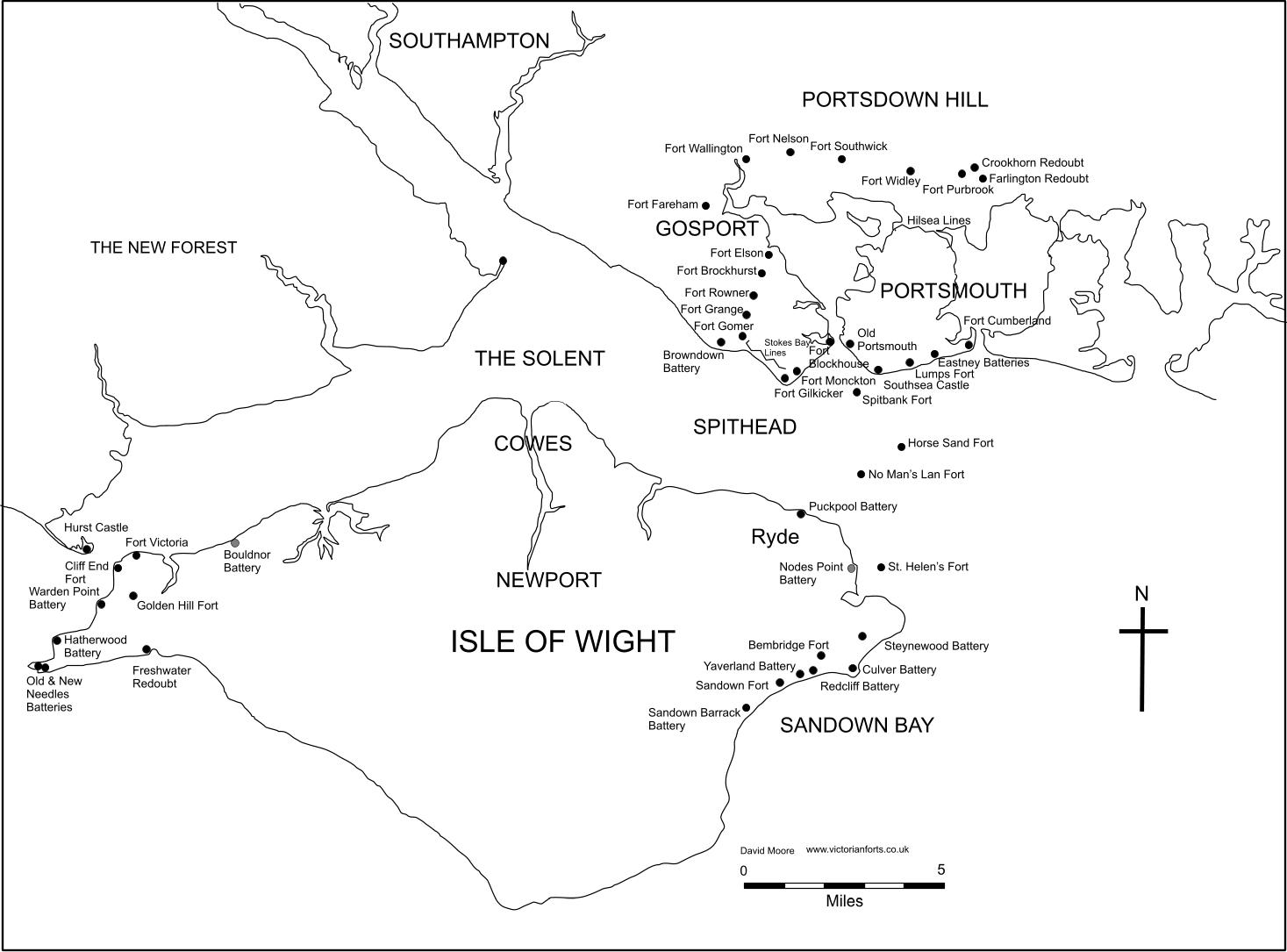|
Spithead
Spithead is an area of the Solent and a roadstead off Gilkicker Point in Hampshire, England. It is protected from all winds except those from the southeast. It receives its name from the Spit, a sandbank stretching south from the Hampshire shore for . Spithead is long by about in average breadth. Spithead has been strongly defended since 1864 by four Solent Forts, which complement the Fortifications of Portsmouth. The Fleet Review is a British tradition that usually takes place at Spithead, where the monarch reviews the massed Royal Navy. The Spithead mutiny occurred in 1797 in the Royal Navy fleet at anchor at Spithead. It is also the location where sank in 1782 with the loss of more than 800 lives. In popular culture In the operetta ''H.M.S. Pinafore'' by Gilbert and Sullivan Gilbert and Sullivan was a Victorian era, Victorian-era theatrical partnership of the dramatist W. S. Gilbert (1836–1911) and the composer Arthur Sullivan (1842–1900), who jointly crea ... [...More Info...] [...Related Items...] OR: [Wikipedia] [Google] [Baidu] |
Spithead And Nore Mutinies
The Spithead and Nore mutinies were two major mutinies by sailors of the Royal Navy in 1797. They were the first in an increasing series of outbreaks of maritime radicalism in the Atlantic World. Despite their temporal proximity, the mutinies differed in character. The Spithead mutiny was a simple, peaceful, successful strike action to address economic grievances, while the Nore mutiny was a more radical action, articulating political ideals as well, which failed. The mutinies were extremely problematic for Britain, because at the time the country was at war with Revolutionary France, and the Navy was the main component of the war effort. There were also concerns among the government that the mutinies might be part of wider attempts at revolutionary sedition instigated by societies such as the London Corresponding Society and the United Irishmen. Spithead The mutiny at Spithead (an anchorage near Portsmouth) lasted from 16 April to 15 May 1797. Sailors on 16 ships in the Ch ... [...More Info...] [...Related Items...] OR: [Wikipedia] [Google] [Baidu] |
Fleet Review
A fleet review or naval review is an event where a gathering of ships from a particular navy is paraded and reviewed by an incumbent head of state and/or other official civilian and military dignitaries. A number of national navies continue to hold fleet reviews. Fleet reviews may also include participants and warships from multiple navies. Commonwealth realms Fleet reviews in the Commonwealth realms are typically observed by the reigning monarch or their representative, a practice allegedly dating back to the 15th century. Such an event is not held at regular intervals and originally only occurred when the fleet was mobilised for war or for a show of strength to discourage potential enemies, or during periods of commemorations. Since the 19th century, they have often been held for the coronation or for special royal jubilees and increasingly included delegates from other national navies. Traditionally, a fleet review will have participating ships dressed in flags and pennants ... [...More Info...] [...Related Items...] OR: [Wikipedia] [Google] [Baidu] |
Fortifications Of Portsmouth
The fortifications of Portsmouth are extensive due to its strategic position on the English Channel and role as home to the Royal Navy. For this reason, Portsmouth was, by the 19th century, one of the most fortified cities in the world. The fortifications have evolved over the centuries in response to changes in tactics and technology and the area defended has increased. While the first defences focused on Portsmouth harbour, in step with the fortifications of Gosport, later defensive structures protected the whole of Portsea Island and an increasing distance inland. At the same time, the fortifications of Portsmouth and Gosport became part of the wider fortifications of the Solent. Old Portsmouth, on the southwest corner of Portsea Island, has been walled for much of its history. The first fortifications The first fortification in the area was Portchester Castle, which, ultimately, dates back to the Roman Portus Adurni. Its position allowed it to provide a degree of defence ... [...More Info...] [...Related Items...] OR: [Wikipedia] [Google] [Baidu] |
Solent
The Solent ( ) is a strait between the Isle of Wight and Great Britain. It is about long and varies in width between , although the Hurst Spit which projects into the Solent narrows the sea crossing between Hurst Castle and Colwell Bay to just over . The Solent is a major shipping lane for passenger, freight and military vessels. It is an important recreational area for water sports, particularly yachting, hosting the Cowes Week sailing event annually. It is sheltered by the Isle of Wight and has a complex tidal pattern, which has benefited Southampton's success as a port, providing a "double high tide" that extends the tidal window during which deep-draught ships can be handled. Portsmouth lies on its shores. Spithead, an area off Gilkicker Point near Gosport, is known as the place where the Royal Navy is traditionally reviewed by the monarch of the day. The area is of great ecological and landscape importance, particularly because of the coastal and estuarine habitats a ... [...More Info...] [...Related Items...] OR: [Wikipedia] [Google] [Baidu] |
The Solent
The Solent ( ) is a strait between the Isle of Wight and Great Britain. It is about long and varies in width between , although the Hurst Spit which projects into the Solent narrows the sea crossing between Hurst Castle and Colwell Bay to just over . The Solent is a major shipping lane for passenger, freight and military vessels. It is an important recreational area for water sports, particularly yachting, hosting the Cowes Week sailing event annually. It is sheltered by the Isle of Wight and has a complex tidal pattern, which has benefited Southampton's success as a port, providing a "double high tide" that extends the tidal window during which deep-draught ships can be handled. Portsmouth lies on its shores. Spithead, an area off Gilkicker Point near Gosport, is known as the place where the Royal Navy is traditionally reviewed by the monarch of the day. The area is of great ecological and landscape importance, particularly because of the coastal and estuarine habitats ... [...More Info...] [...Related Items...] OR: [Wikipedia] [Google] [Baidu] |
Roadstead
A roadstead (or ''roads'' – the earlier form) is a body of water sheltered from rip currents, spring tides, or ocean swell where ships can lie reasonably safely at anchor without dragging or snatching.United States Army technical manual, TM 5-360. Port Construction and Rehabilitation'. Washington: United States. Government Printing Office, 1964. It can be open or natural, usually estuary-based, or may be created artificially. In maritime law, it is described as a "known general station for ships, notoriously used as such, and distinguished by the name". Definition A roadstead can be an area of safe anchorage for ships waiting to enter a port, or to form a convoy. If sufficiently sheltered and convenient, it can be used for the transshipment of goods, stores, and troops, either separately or in combination. The same applies in transfers to and from shore by Lighter (barge), lighters. In the days of sailing ships, some voyages could only easily be made with a change in wind dir ... [...More Info...] [...Related Items...] OR: [Wikipedia] [Google] [Baidu] |
Hampshire
Hampshire (, ; abbreviated to Hants) is a ceremonial county, ceremonial and non-metropolitan county, non-metropolitan counties of England, county in western South East England on the coast of the English Channel. Home to two major English cities on its south coast, Southampton and Portsmouth, Hampshire is the 9th-most populous county in England. The county town of Hampshire is Winchester, located in the north of the county. The county is bordered by Dorset to the south-west, Wiltshire to the north-west, Berkshire to the north, Surrey to the north-east, and West Sussex to the south east. The county is geographically diverse, with upland rising to and mostly south-flowing rivers. There are areas of downland and marsh, and two national parks: the New Forest National Park, New Forest and part of the South Downs National Park, South Downs, which together cover 45 per cent of Hampshire. Settled about 14,000 years ago, Hampshire's recorded history dates to Roman Britain, when its chi ... [...More Info...] [...Related Items...] OR: [Wikipedia] [Google] [Baidu] |
England
England is a country that is part of the United Kingdom. It shares land borders with Wales to its west and Scotland to its north. The Irish Sea lies northwest and the Celtic Sea to the southwest. It is separated from continental Europe by the North Sea to the east and the English Channel to the south. The country covers five-eighths of the island of Great Britain, which lies in the North Atlantic, and includes over 100 smaller islands, such as the Isles of Scilly and the Isle of Wight. The area now called England was first inhabited by modern humans during the Upper Paleolithic period, but takes its name from the Angles, a Germanic tribe deriving its name from the Anglia peninsula, who settled during the 5th and 6th centuries. England became a unified state in the 10th century and has had a significant cultural and legal impact on the wider world since the Age of Discovery, which began during the 15th century. The English language, the Anglican Church, and Engli ... [...More Info...] [...Related Items...] OR: [Wikipedia] [Google] [Baidu] |
Spit (landform)
A spit or sandspit is a deposition bar or beach landform off coasts or lake shores. It develops in places where re-entrance occurs, such as at a cove's headlands, by the process of longshore drift by longshore currents. The drift occurs due to waves meeting the beach at an oblique angle, moving sediment down the beach in a zigzag pattern. This is complemented by longshore currents, which further transport sediment through the water alongside the beach. These currents are caused by the same waves that cause the drift. Hydrology and geology Where the direction of the shore inland ''re-enters'', or changes direction, for example at a headland, the longshore current spreads out or dissipates. No longer able to carry the full load, much of the sediment is dropped. This is called deposition. This submerged bar of sediment allows longshore drift or littoral drift to continue to transport sediment in the direction the waves are breaking, forming an above-water spit. Without the co ... [...More Info...] [...Related Items...] OR: [Wikipedia] [Google] [Baidu] |
Shoal
In oceanography, geomorphology, and geoscience, a shoal is a natural submerged ridge, bank, or bar that consists of, or is covered by, sand or other unconsolidated material and rises from the bed of a body of water to near the surface. It often refers to those submerged ridges, banks, or bars that rise near enough to the surface of a body of water as to constitute a danger to navigation. Shoals are also known as sandbanks, sandbars, or gravelbars. Two or more shoals that are either separated by shared troughs or interconnected by past or present sedimentary and hydrographic processes are referred to as a shoal complex.Neuendorf, K.K.E., J.P. Mehl Jr., and J.A. Jackson, eds. (2005) ''Glossary of Geology'' (5th ed.). Alexandria, Virginia, American Geological Institute. 779 pp. The term ''shoal'' is also used in a number of ways that can be either similar or quite different from how it is used in geologic, geomorphic, and oceanographic literature. Sometimes, this term refer ... [...More Info...] [...Related Items...] OR: [Wikipedia] [Google] [Baidu] |
Solent Forts
The Palmerston Forts that encircle Portsmouth were built in response to the 1859 Royal Commission dealing with the perceived threat of a French invasion. The forts were intended to defend the Dockyard in Portsmouth. Construction was carried out by the Royal Engineers and civilian contractors (under Royal Engineer supervision). In addition to the newly constructed forts, extensive work was carried out on existing fortifications. The Portsmouth defences can be split into four distinct groups of forts, comprising four sea forts built in the Solent, a group of forts on Portsea Island, a group of forts along Portsdown Hill overlooking Portsmouth, and a group of forts on the Gosport peninsula. As well as these forts surrounding Portsmouth, further protection for Portsmouth was provided by additional Palmerston forts on the Isle of Wight. Solent forts These man-made island forts were originally built to protect the eastern approaches to Portsmouth Harbour from attack by enemy forc ... [...More Info...] [...Related Items...] OR: [Wikipedia] [Google] [Baidu] |





